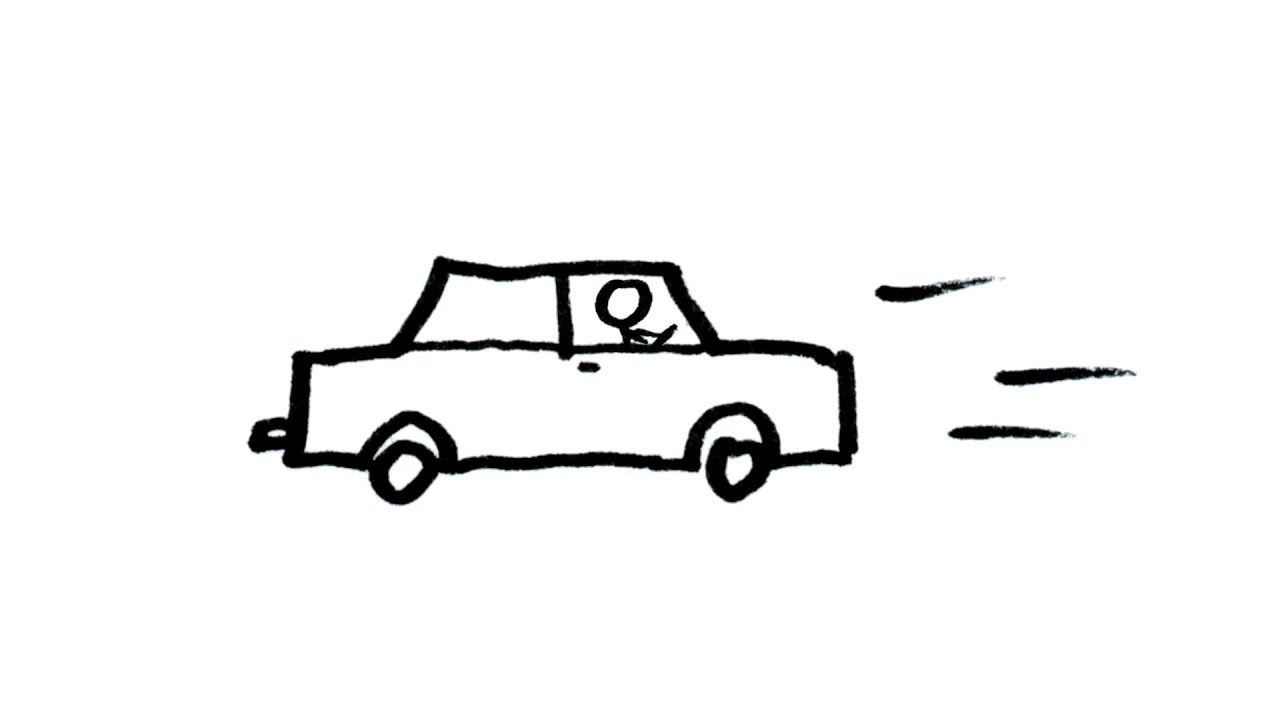When you turn a car's steering wheel a certain amount, the car follows the same curve regardless of whether you're going forwards or backwards.
当你把汽车的方向盘转到一定程度时,无论你是向前还是向后,汽车都会沿着相同的曲线行驶。
So it seems like it should be just as easy to steer going backwards as going forwards. But clearly, it's not.
所以倒车似乎应该和向前开一样简单,但显然不是。
Suprisingly, the difficulty of driving backwards has almost nothing to do with the direction you're facing
让人惊奇的是,倒车那么难,却和你面朝哪个方向毫无关系
and everything to do with the fact that you steer using the front wheels.
一切都与你使用前轮进行驾驶有关。
When driving forwards, a car goes in the direction the front wheels are pointed.
当向前行驶时,汽车沿着前轮指向的方向前进。
And when driving backwards, the car goes where the back wheels are pointed. Simple!
但倒车时,车子会朝后轮指向的方向行驶。很简单!
But the difference is that going forwards, the direction of travel is determined by the same wheels you steer with,
但区别在于,向前行驶,行驶防线由你操控的车轮决定的,
so you just point them where you want to go, and that's where you go, the back wheels follow automatically.
所以你指向哪里,车子就往哪里走,后轮会自动跟着。
In physics, we call this a "stable" system, like dangling a pencil from your fingers – move your hand around and the pencil follows, no thought required.
在物理学中,我们成这个为“稳定”系统,就像把铅笔从你的手指上晃来荡去——手动,铅笔跟着动。
However, when driving backwards, the direction of travel is determined by the back wheels but you steer with the front wheels.
但当你倒车时,汽车行驶的方向是由后轮决定的,但你操控的只是前轮。
So rather than just pointing the front wheels where you want to go,
所以,不要只用把前轮指向你想要去的地方就行了,
you have to point them in the direction that will get the back wheels to point in the direction you want to go –
而是你必须给前轮指向一个方向,而这个方向能带动后轮按你想要的方向行驶——
it's an additional level of separation before the car does what you want.
这是让车子听话前的一种额外的分离。

And in fact, if you don't make any corrections, then over time the back wheels point farther and farther away from the direction you want to go:
实际上,如果你不作出任何修正,那么后轮会越来越偏离你想要的方向:
instead of following the front wheels, they want to run away!
它们不会跟着前轮,它们是想逃跑!
This is an unstable system, like trying to balance a pencil on your fingertip.
这是一种不稳定系统,就像试图平衡指尖上的铅笔一样。
It's incredibly finicky and requires a ton of coordinated hand-eye feedback to maintain.
它非常挑剔,需要大量协调的手眼反馈来维持。
That's why you constantly have to readjust your steering when driving backwards – mathematically, your car is like an upside-down pencil!
所以在倒车时,你需要不断调整方向盘——从数学上讲,你的车就像一支倒转的铅笔!
Of course, there are some successful rear-steering wheeled vehicles – forklifts, for example,
当然,也有一些成功的后转向轮式车辆,例如铲车,
only drive slowly and choose rear-steering for greater control of their forks.
慢慢开,选择后转向以更好地控制前叉。
But let's go in the other direction and add a trailer to your car – steering backwards has gained another level of difficulty:
但让我们从另一个方向出发,为你的汽车增加一个拖车——向后驾驶又增加了一个难度:
you use your front wheels to get the back wheels to point in the direction needed to get the trailer to point in the direction you want to go.
你用你的前轮使后轮指向所需的方向,使拖车指向你想要去的方向。
Not complicated enough? It becomes worse the more trailers you add –
还不够复杂?拖车越多,越糟糕——
each one adds another level of separation between the direction of your steering and the actual direction of travel.
每一个都增加了你的驾驶方向和实际行驶方向之间的另一个层次的分离。
Which is why it's nearly impossible to push on one end of a chain or a rope and have the other end go where you want it to,
所以你几乎不可能推动链条或绳子的一端,然后让另一端去你想去的地方,
and why you will never, ever balance a flexible rope or chain upright on your finger, which makes backwards driving seem downright easy!
所以你永远无法将一根柔韧的绳子或链条竖着立在手指上保持平衡,相比之下倒车看起来非常容易!













